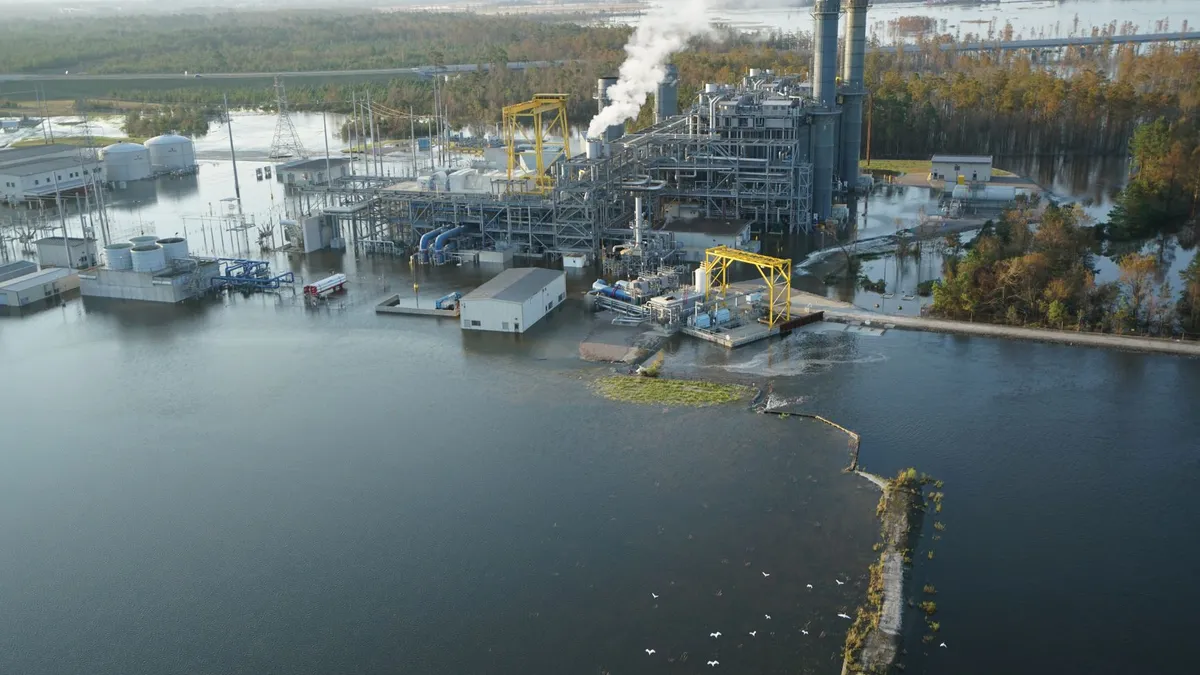Wildfires that burn hotter for longer and larger hurricanes that linger over land — these are results of climate change supply chains are already contending with. A report released last week by the Trump administration stated that the U.S. economy will shrink by 10% due to climate change by 2100, putting what feels like a slow-moving problem in sharper relief and bringing to light the more tangible and predictable challenges to come.
The fourth National Climate Assessment, compiled by climate scientists and 13 federal agencies is expansive, but for most supply chains, the top line takeaway is that climate change will add more volatility to operations. This may not seem like news since we can already see volatility in the form of more storms, floods and fires. But volatility isn’t the end of the story.
The report presents the threat in the context of fixed assets on which supply chains depend. It paints a picture of a future that is not simply more volatile with more extreme and more frequent weather events — but where some changes will be permanent and ongoing.
And when it comes to infrastructure, though the problem of climate change may seem intractable and difficult to avoid, in the context of a mere 70-year timeline there are actions supply chains can take today to minimize interruptions — and that starts with a deep understanding of the problems that supply chains are likely to face in the not-so-distant future.
Ports
The report explains the global sea level is expected to rise one to four feet by 2100. That means some ports are likely to see major effects from "land sinking," and infrastructure will need to be assessed since sea level rise can lead to clearance issues with bridges and flooding on major access roads.
The Gulf Coast is the most immediate concern for these problems, but other ports should also be making plans since ports are built in low-lying areas. The report names the ports of Los Angeles, Galveston/Houston and South Louisiana as particular concerns due to their high volumes.
Airports
Thirteen of the 47 largest airports in the U.S. have runways that could be compromised by storm surge and sea level rise. Storms and obvious weather events have already begun to disrupt air freight, but in California this year, we learned that the effects can reach airports beyond the initial threat in the form of smoke-related visibility issues.
Likewise, hotter temperatures can compromise aircraft performance and extremely hot temperatures can sometimes keep aircraft grounded at high altitudes. If airline delays and cancellations seem more frequent now, they are likely to become more so, according to the report.
Road and rail
When weather disaster strikes, road closures are generally well-covered, but the permanent damage is less so. Higher temperatures, along with faster flowing and more intense water exposure, can cause asphalt to wear and deteriorate faster.
The report explains that some states are already working on plans to prepare their roads to better withstand extreme temperatures. These plans range from digital monitoring to simpler changes such as planting trees along roadways to absorb some heat and reduce "stress on pavement."
The threat to roads and rail are similar in that the same forces that cause asphalt to break down can buckle rail lines.
What to do now
When a problem is as expansive as climate change it can be difficult to digest and address, but when it comes to fixed assets like ports, airports and even major roads, supply chains can push for the necessary changes to these entities and plan for what’s to come right now.
The first step individual businesses can take today is to determine what assets essential to their operations are most likely to be affected and make a plan. The report suggests taking a close look at stormwater management, coastal zones and evacuation plans.
Planning contingencies now will save stress and funds later. This planning goes for facilities, but also transportation routes. As we have seen in California with recent wildfires, some disasters interrupt supply lines more than others
It must be noted as well that actions to reduce carbon emissions and decrease the contribution of supply chain infrastructure to the problem of climate change, as some industries have begun to organize and implement, while necessary in their own right, are not the same as preparing to withstand the problem itself.
Infrastructure and land-use redesign will help, but since those are at the municipal and federal level, they’re harder for individual supply chains to move. Ports and airports, and the companies that function within them should be responsive to the concerns of their customers. Pushing these facilities for preparations and changes is another action supply chains can take right away.




















